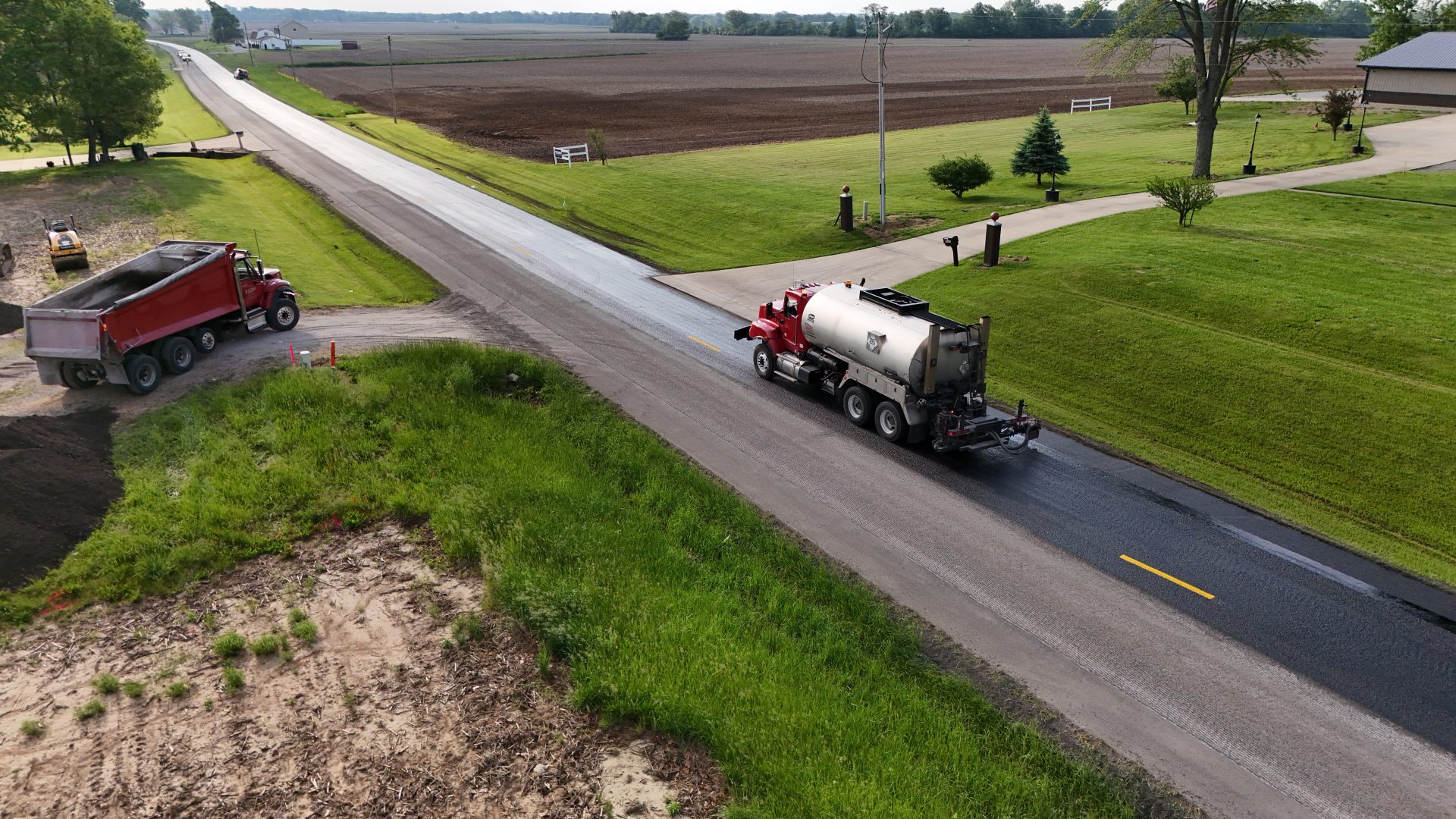Roadway departure crashes remain one of the deadliest occurrences on U.S. roads. Between 2016 and 2018, the Federal Highway Administration recorded an average of 19,158 fatalities from these types of incidents — accounting for a staggering 51% of all traffic-related deaths nationwide.
In response, local agencies across the country are working to make roads safer by targeting both systemic risks and specific accident hotspots. Common countermeasures include road widening, installation of rumble strips or guardrails and enhanced pavement markings — all designed to help drivers stay on the road or survive a lane departure without fatal consequences.
Tools and Funding for Highway Safety
To support these efforts, the federal government provides critical funding and tools through programs like the Highway Safety Improvement Program (HSIP). HSIP takes a data-driven approach, supplying states with the funding needed to carry out their Strategic Highway Safety Plans and invest in targeted safety improvements.
In Coles County, Illinois, County Engineer Rick Johnson used the Illinois DOT’s Safety Portal to identify Westfield Road (County Highway 32) — a rural, two-lane roadway with a disproportionately high number of run-off-road crashes. With help from the Run-Off-the-Road Initiative (RORI) tool, Johnson determined that adding bituminous shoulders with rumble strips would be the most effective countermeasure for this roadway.
Thanks to the strong alignment with HSIP’s data-driven criteria, the project qualified for federal funding support.
Learn more about HSIP applications, and resources like the RORI tool, here.
Improvement Plan: Westfield Road – CH 32
The plan called for the installation of 4-foot-wide bituminous shoulders with shoulder rumble strips to alert motorists when they begin to drift and then provide a stable surface for them to correct their vehicle.
To further enhance visibility and nighttime safety, inlaid thermoplastic pavement markings and new chevrons on its two reverse curves were added.
Another key upgrade included the application of Void Reducing Asphalt Membrane (VRAM), known in Illinois as Longitudinal Joint Sealant (LJS). Applied beneath the centerline joint and shoulder rumble strips, VRAM helps seal these vulnerable areas from the bottom up, extending the life of the pavement and reducing maintenance needs.
“Increasing the life of the pavement is always a plus,” said Johnson. “Increased density at the centerline and slowing the reflective cracks at the newly created shoulder joints is also a great benefit since the mainline surface and shoulders will be laid in one pass.”
Why VRAM Matters Under Rumble Strips
Milling rumble strips into an asphalt pavement reduces the surface thickness and creates an area for water to gather and easily penetrate layers below. Since rumble strips are typically milled over an already vulnerable longitudinal joint, the use of highly polymerized VRAM material to enhance asphalt durability is valuable. Research shows that VRAM beneath rumble strips significantly slows the cracking propagation rates, helping rumble strips remain effective for longer and reducing the need for costly, high-risk repairs.
Beyond the safety benefits, VRAM also delivers long-term financial benefits. On average, agencies save $2 on future maintenance and repairs for every dollar spent on VRAM. In Illinois, lifecycle cost analysis shows a return of 3 to 5 times the initial investment.
Project Details: Coles County, Westfield Road
- Owner: Coles County Highway Department
- Prime Paving Contractor: Ne-Co Asphalt
- VRAM/LJS Applicator: Evergreen Roadworks
- Location: Westfield Rd, CH-32 from IL-130 east to Clark County line
- Date: May 15, 2025
This 6.31-mile section of Westfield Road was targeted for reconstruction with improved safety features. First, the road surface was milled and tacked. Then, Evergreen Roadworks applied VRAM/LJS using a specialized distributor truck to lay down 18-inch-wide bands at a targeted rate of 1.80 lb/ft. The bands were located under the centerline and the shoulder rumble strips, protecting the centerline joint and covering the shoulder-widening joint. Since paving was scheduled several days later, sand was applied over the VRAM/LJS per Illinois specifications.
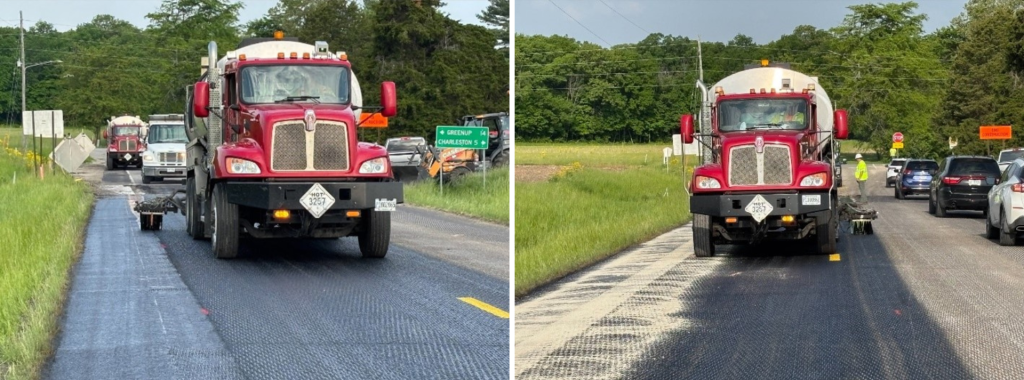
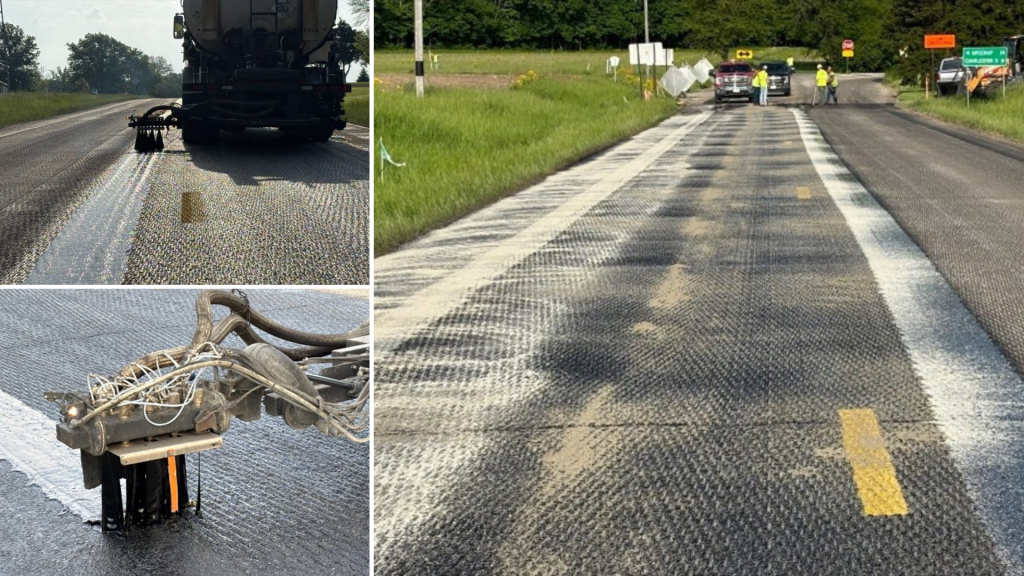
VRAM application beneath shoulder (rumble strip) joints and centerline. Sand covering the band of VRAM
Paving and Final Enhancements
Four days later, Ne-Co Asphalt followed with a 2-inch surface course of HMA IL-9.5 Mix C N70 using a Volvo PF6110 rubber track paver. The heat from the asphalt and compaction from steel drum rollers allowed the VRAM to migrate upward, filling voids and creating a highly durable joint and asphalt surface resistant to moisture intrusion.
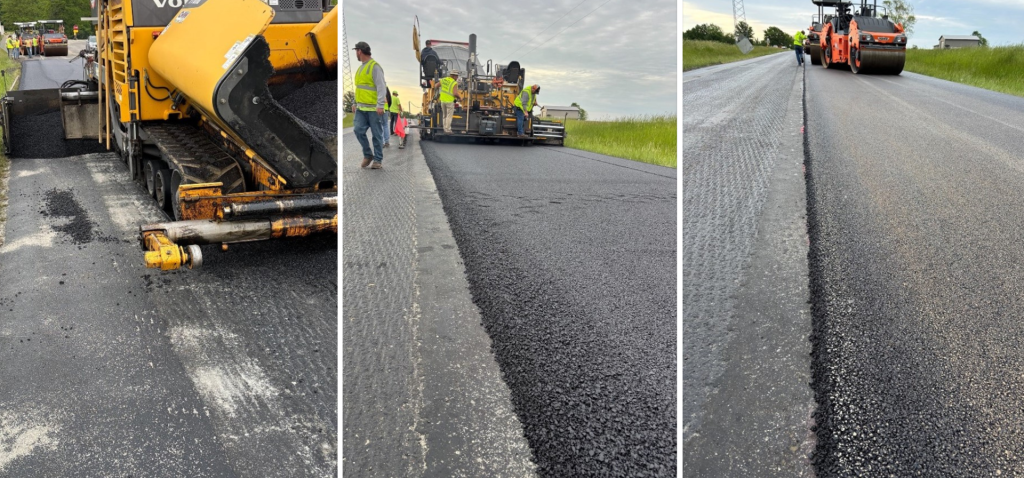
Ne-Co Asphalt paves 2” HMA surface course over the sanded VRAM bands
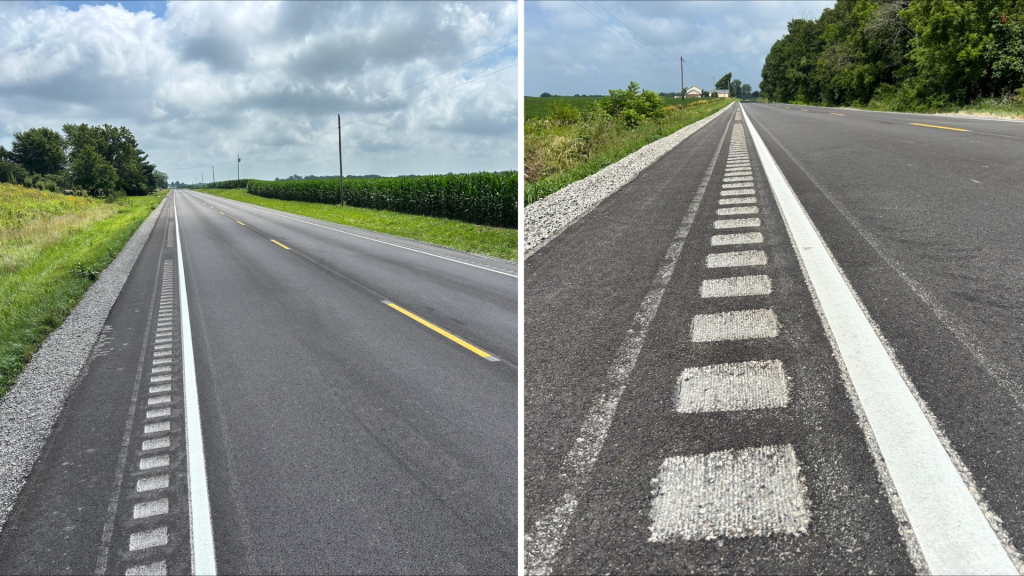
Once the paving was complete, rumble strips were milled into the widened 4-foot shoulders above the VRAM-reinforced surface. The finishing touches included the installation of thermoplastic lane markings and chevrons to alert drivers to the road’s curves.
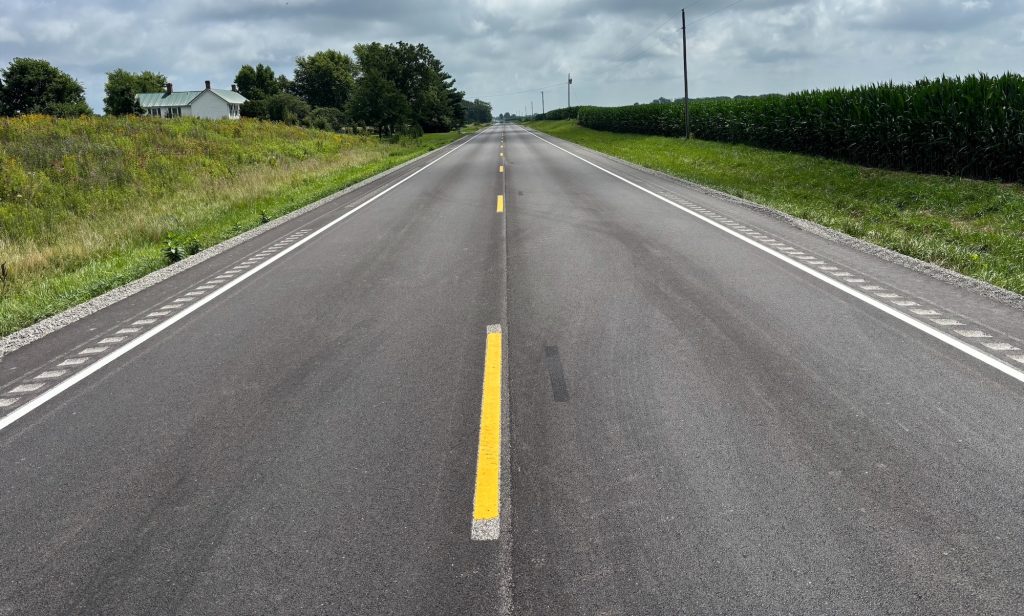
Completed project with shoulder rumble strips, 4′ shoulder, thermoplastic lane markings
With HSIP funding and guidance from statewide crash data tools like RORI, Coles County was able to implement a forward-thinking, cost-effective plan to improve road safety. Thanks to the VRAM-reinforced joint and shoulder rumble strips, Westfield Road is now better equipped to prevent run-off-road crashes and will require fewer repairs in the years to come, ultimately keeping both drivers and road workers safer.
Editor’s Note:
J-Band® is the premier VRAM/LJS, created in the labs of the Heritage Research Group (HRG) and is a product of Asphalt Materials, Inc. (AMI) and is a registered trademark of AMI.

